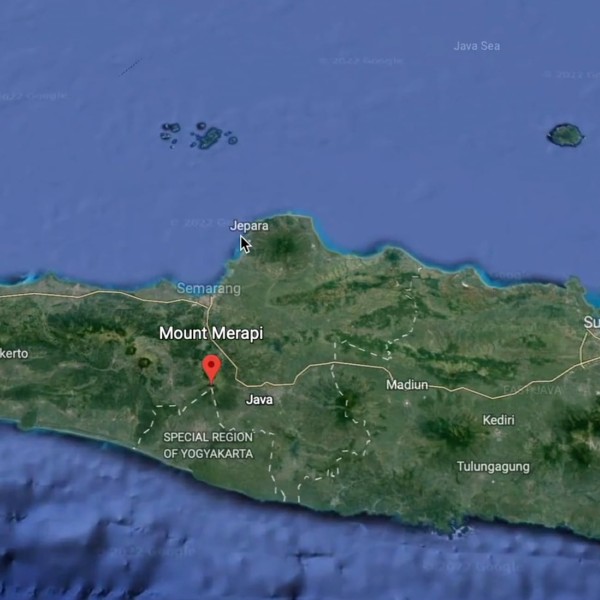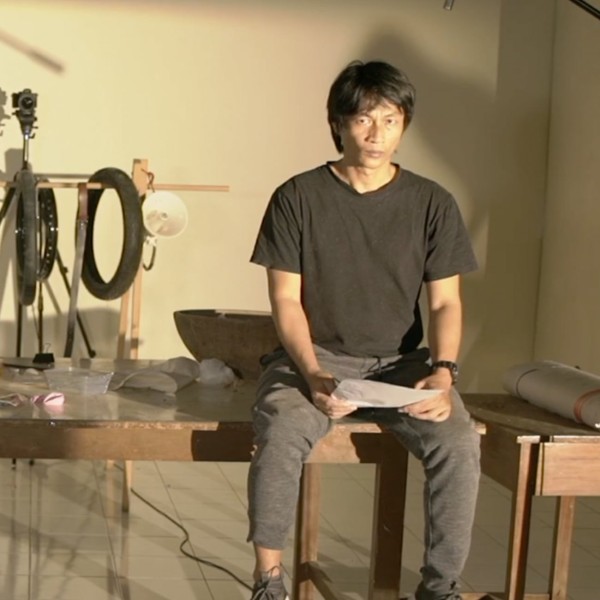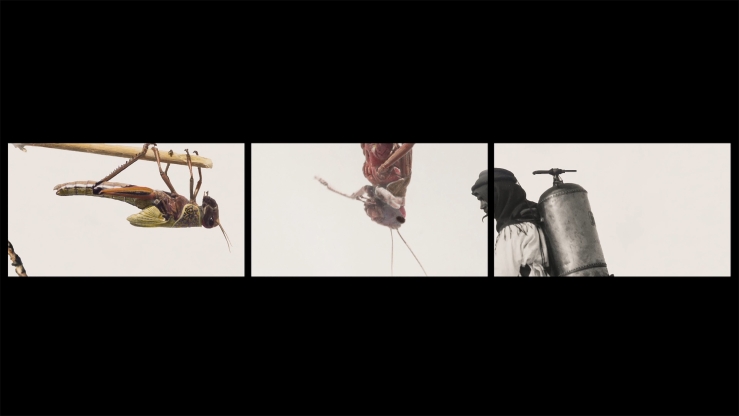Ghost Light
At the theatre, the so-called ghost light marks a liminal state. It is placed at the center of the stage after rehearsals or performances and indicates that no one is allowed to use the stage. At the same time, it signifies the transformation of the stage from a place of function into a place of fiction — in that moment when the light goes out and the play begins.
How is history written? How are stories written? By and for whom? And who decides how they are read? Reflecting upon the writing of (hi)stories is always a reflection about the power that accompanies the act of writing. But what happens when this process is opened up, when others are invited to contribute a piece of their history? It is this opening up which Timoteus Anggawan Kusno continually investigates in artistically different ways.
As such, the point of departure for GHOST LIGHT was not a finished text, but individual objects: a crow, the metal sketch of a pedestal, paper lanterns, the ghost light itself. Each object carries its own symbolic meanings and signifies a liminal state, one of transition: from life to life after death, from submission to power, from reality to fiction. These objects were the initial catalysts to which the two performers reacted anew each day with their bodies, their facial expressions and gestures, and their emotions in the course of a 40 day workshop, with the goal of producing ever new story components. Kusno recorded their every movement in order to, little by little, extract an independent vocabulary of individual movements for each object, which he later assembled into a continuous whole during the editing process. The sound was only added at the very end. The Foley Artists (sound makers in film productions), which can be seen on the second screen — two of them are the performers themselves — produced the sounds accompanying the movements after the fact, in reaction to the finished video and in memory of how the perfor- mance sounded.
There is a constant feeling of irritation with respect to what we see, what we hear, and what we think we recognize and understand. This opens up space for imagination, and invites us to fill in the textual gaps with our own thoughts. This is the space we ultimately enter as spectators in the exhibition. We step between the screens, between sight and sound, between the bodies of the performers and the objects as well as the (hi)stories they tell. And with each viewing, a new story begins. (Tasja Langenbach)
Performance directed by Shohifur Ridho’I
Performed by Ari Dwianto & Jamaluddin Latif
Cinematography by Aditya Kresna & Stiven A. Chaniago
Script and dramaturg by Timoteus Anggawan Kusno & Shohifur Ridho’I
Co-artistic director Teguh Hari
Sound engineered by Hengga Tiyasa
Supported by Padepokan Seni Bagong Kussudiardja, Cemeti Institute for Art and Society, Proyek Kodok Ijo and TAK Studioworks
*We can only show an excerpt of this work in the online archive. For the complete version, please contact the artist.
Images: Timoteus Anggawan Kusno, Ghost Light, 2021 © Timoteus Anggawan Kusno
About the video
About the artist
- 1989 in Yogyakarta, INA, lives and works in Yogyakarta, INA.
PhD candidate at the University of Amsterdam, NED, studied at the Sanata Dharma University, Yogyakarta, INA, and the Gadjah Mada University, Yogyakarta, INA
Insights at Videonale X



